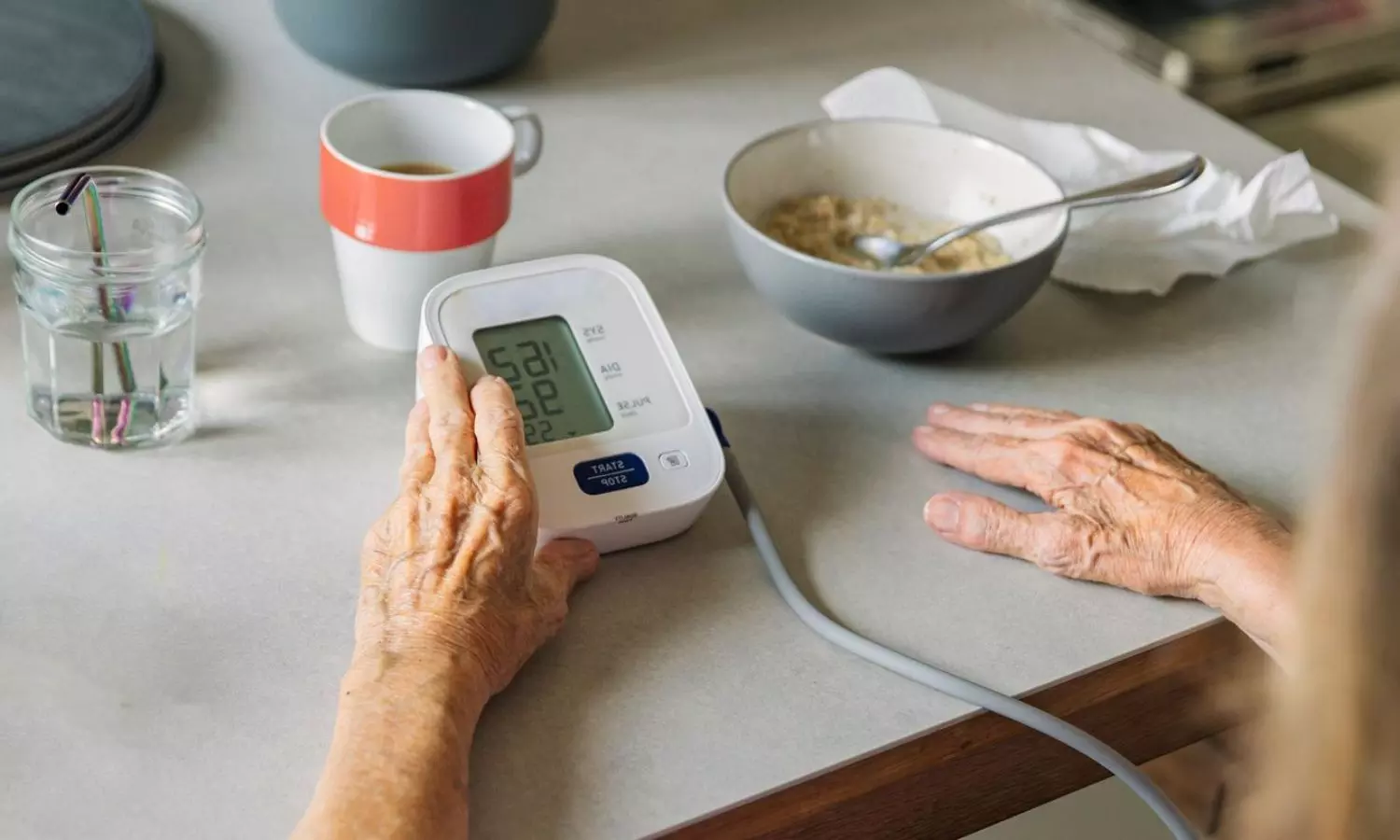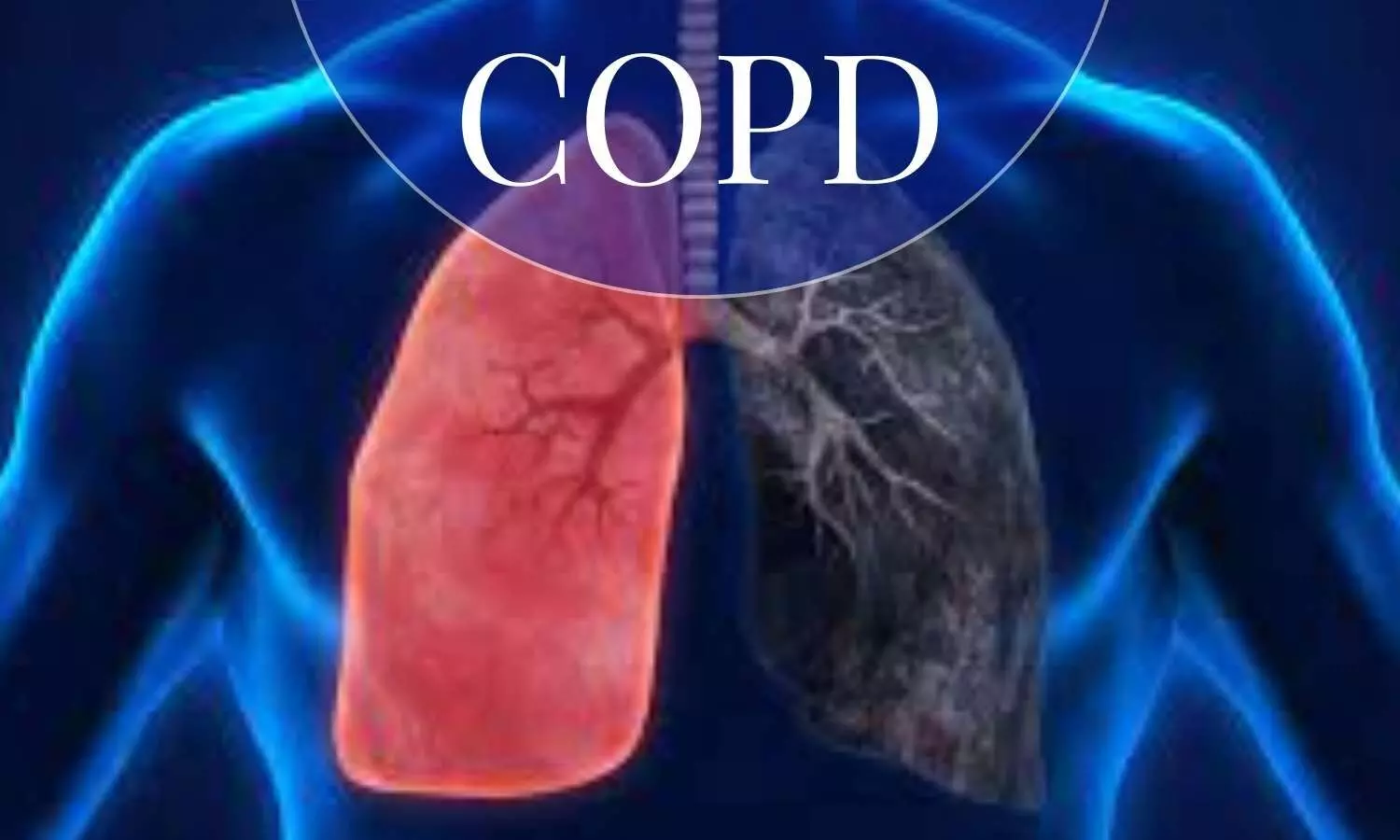Childcare is unaffordable for US medical residents, national study finds
Powered by WPeMatico
Powered by WPeMatico
Powered by WPeMatico
Powered by WPeMatico
Powered by WPeMatico

New Delhi- Candidates applying for the National Eligibility-cum-Entrance Test (NEET (UG) 2024) for admission to undergraduate medical education in all medical institutions should be aware of the do’s and don’ts of the exam day.
Here is the detailed information about barred items, dress code and instructions to be followed in the examination hall as per NEET UG 2024 Information Bulletin.
BARRED ITEMS
1 The candidates will be subjected to extensive and compulsory frisking before entering the Examination Centre with the help of highly sensitive metal detectors. The candidates are not allowed to carry the following items inside the Examination Centre under any circumstances-
A Any item like textual material (printed or written), bits of paper, Geometry/Pencil Box, Plastic Pouch, Calculator, Pen, Scale, Writing Pad, Pen Drives, Eraser, Calculator, Log Table, Electronic Pen/Scanner, etc.
B Any communication device like Mobile Phone, Bluetooth, Earphones, Microphone, Pager, Health Band, etc.
C Other items like Wallet, Goggles, Handbags, Belt, Cap, etc.
D Any Watch/Wristwatch, Bracelet, Camera, etc.
E Any ornaments/metallic items.
F Any food items opened or packed, water bottles, etc.
G Any other item which could be used for unfair means, by hiding communication devices like a microchip, camera, Bluetooth device, etc.
2 No arrangement will be made at the Centres for keeping any articles/items belonging to the candidates.
3 The candidates wearing articles or objects of faith (customary/ cultural/ religious) should report at the examination centre at least two hours before the last reporting time so that there is enough time for proper frisking without any inconvenience to the candidate while maintaining the sanctity of the examination. If upon screening, it is discovered that any candidate is carrying a suspected device within such an item of faith, he/ she may be asked not to take it into the examination hall.
DRESS CODE
1 The candidates are instructed to follow the following dress code while appearing for NEET UG 2024-
A Heavy clothes and/or long sleeves are not permitted. However, in case, candidates come in cultural/ customary dress at the Examination Centre, they should report at least an hour before the last reporting time i.e. 12.30 pm so that there is enough time for proper frisking without any inconvenience to the candidate while maintaining the sanctity of the examination.
B Slippers and sandals with low heels are permitted. Shoes are not permitted.
C In case of any deviation required due to unavoidable (medical, etc.) circumstances, specific approval of NTA must be taken before the Admit Cards are issued.
2 It is desired that the candidates follow instructions issued by the NTA strictly. This will help NTA in the fair conduct of the examination.
INSTRUCTIONS TO BE FOLLOWED IN THE EXAMINATION HALL
1 The Examination Centre will be opened two (02) hours before the commencement of the test. No candidate shall be allowed to enter the Examination Centre after 1:30 pm. Therefore, candidates must ensure that they leave home well in advance considering all facts like traffic, location of the Centre, weather conditions, etc. Candidates are expected to take their seats immediately after the opening of the Examination Hall.
|
S.NO |
PARTICULARS |
TIME |
|
1 |
Date of Examination. |
05 May 2024 (Sunday) |
|
2 |
Timing and Duration of Examination. |
02.00 pm to 05.20 pm (Indian Standard Time) (3 hours 20 minutes). |
|
3 |
Last Entry to the Examination Centre. |
01.30 pm. |
|
4 |
Sitting on the seat in the Examination Hall/Room. |
01.15 pm onwards. |
|
5 |
Announcement of Important Instructions and Checking of Admit Cards by the Invigilator. |
01.30 pm to 01.45 pm. |
|
6 |
Distribution of Test Booklet by the Invigilator. |
01.45 pm. |
|
7 |
Writing of particulars on the Test Booklet by the Candidate. |
01.50 pm. |
|
8 |
Test Commences. |
02.00 pm |
|
9 |
Test Concludes. |
05.20 pm |
2 The candidate must show, on-demand, the Admit Card for admission in the Examination Hall. A candidate who does not possess a valid Admit Card shall not be allowed to enter the Examination Hall by the Centre Superintendent.
3 A seat with a roll number will be allotted to each candidate. Candidates must find out and occupy their allotted seats. If a candidate is found appearing in the Examination from a seat or room other than the allotted one, the candidature shall be cancelled.
4 During the examination time, the Invigilator will check the Admit Card of the candidates to ascertain the identity of each candidate. The Invigilators will also put their own signature in the place provided in the Answer Sheet and on the Attendance Sheet.
5 A candidate who comes after 01:30 pm shall not be permitted to enter the Examination Centre under any circumstances.
6 Candidates must bring ONLY the following documents on the day of examination at the test centre. Candidates who will not bring these will not be allowed to sit in the examination.
A A printed copy of the Admit Card downloaded from the NTA website with a passport-size photograph (same as uploaded on the Application form pasted on it).
B One passport-size photograph (same as uploaded on the Online Application Form) for pasting on the specific space in the Attendance Sheet at the Centre during the NEET (UG) – 2024 Examination.
C One Post Card Size (4” X 6”) colour photograph with a white background should be pasted on the Proforma downloaded with the Admit Card. The proforma with Post the size photograph shall be handed over to the Invigilator in the Examination Hall.
D Any one of the authorized photo IDs (must be original and valid and like PAN card/Driving License/Voter ID/Passport/Aadhaar Card /Ration Card/ Class 12 Admit Card with Photograph /any other valid photo ID issued by the Government.
E PwBD certificate issued by the Competent Authority, if claiming the relaxation under PwBD category.
7 Candidates are not allowed to bring any barred item or any item which could be used for Unfair practices. Possession of any such article with the candidates inside the Centre premises will attract penalties for unfair practices.
8 Candidates are advised in their own interest not to bring any of the barred items to the venue of the examination as arrangements for safekeeping will not be made and candidates found in possession of these items will not be allowed to enter the Examination Centre.
9 No candidate will leave his/her seat or the Examination Room/Hall until the Test concludes as per the schedule. Candidates should not leave the Room/Hall without handing over their OMR Sheets to the invigilator on duty.
10 Smoking in the examination centre and nearby is strictly prohibited.
11 Water Bottles, Tea, coffee, cold drinks or snacks, etc. are not allowed to be taken by the candidates into the examination centre. Candidates suffering from diabetes are allowed to carry into the examination hall the eatables (with prior intimation) like sugar tablets/fruits (like bananas/apples/oranges) and transparent water bottles. However, they will not be allowed to carry packed foods like chocolate/ candy/sandwiches, etc.
12 The Test will start exactly at the time mentioned in the Admit Card and an announcement to this effect will be made by the Invigilator.
13 Before the start of the Examination, important instructions will be communicated to the candidates by the Invigilator for strict compliance by the candidates.
14 A signal will be given at the beginning of the examination and at half-time. A signal will also be given before the closing time when the candidate must stop marking the responses.
15 The candidate must sign twice on the Attendance Sheet at the specified place, the first time immediately after the commencement of the examination and the second time while handing over the Answer Sheet to the Invigilator. The candidates are also required to put the Thumb impression in the space provided on the Attendance Sheet.
16 The candidate will check and ensure that the Test Booklet contains as many pages as are written on the top of the cover page.
17 For those who are unable to appear on the scheduled date of the test for any reason, a re-test shall not be held by the NTA under any circumstances.
18 The candidates, suffering from Diabetes, may be taken care of at the Centre as per the instructions issued by NTA.
PUNISHMENT FOR USING UNFAIR MEANS AND PRACTICES
During the course of, before, or after the examination if a candidate indulges in any of the above or similar practices, he/she shall be deemed to have used unfair practices and booked under the UNFAIR MEANS (U.F.M.) case. The candidate would be debarred for 3 years in the future and shall also be liable for criminal action and /or any other action as deemed fit.
CANCELLATION OF RESULT
1 The result of NEET(UG)-2024 of the candidates who indulge in Unfairmeans Practices will be cancelled and will not be declared.
2 Similarly, the result of those candidates who appear from the Centre other than the one allotted to them, written on the Test booklet/OMR Sheet of other candidates or allowed other candidates to write on their Test Booklet/OMR Sheet will be cancelled (and will not be declared).
Powered by WPeMatico

Panchkula: In an unfortunate incident, a 45-year-old patient admitted to the psychiatric ward allegedly died by suicide after jumping from the fourth floor of a Civil hospital in Sector 6.
As per authorities, the patient became violent when his wife left saying that she would return with food for him after picking up children from school. Following this, he created a ruckus at the hospital leading to the injury of two individuals and then jumped off the building.
The deceased was admitted to the de-addiction centre and psychiatric ward situated on the 4th floor of the hospital on Tuesday the same day when the incident occurred.
Also read- Haryana Anaesthesiologist Jumps To Death From 11th Floor Of Apartment
As per the HT news report, the patient removed the grill of a window in the ward by using a fire extinguisher and then jumped from the window of the building.
Two individuals- a security guard and another patient sustained injuries while trying to prevent the patient from taking the extreme step. The security guard got hit on his foot by the victim with the extinguisher while the other patient suffered an injury in his eye after the victim flung the fire extinguisher at him.
“A patient admitted on Tuesday morning had turned violent and jumped off the fourth floor,” confirmed principal medical officer (PMO) Dr Umesh Modi.
Later, the hospital authorities informed the police and a case is yet to be registered in this case. The wife of the patient has been informed of his passing.
Also read- Alleged Caste Discrimination: NEET Aspirant Jumps To Death In Hyderabad, Probe On
Powered by WPeMatico

USA: In a groundbreaking endeavor, researchers have conducted a 12-week randomized clinical trial examining the effect of a dietary intervention on insulin requirements and glycemic control in individuals with type 1 diabetes (T1D). The study findings offer promising insights into novel approaches for managing this chronic condition.
The researchers found that a low-fat vegan diet — high in carbohydrates and fiber and moderate in protein — increases insulin sensitivity, reduces insulin requirement, and improves glycemic control in individuals with type 1 diabetes versus a conventional portion-controlled diet.
“In the vegan group, total and LDL cholesterol and blood urea nitrogen to creatinine ratio decreased. A1C decreased in both groups,” the researchers reported in Clinical Diabetes.
Hana Kahleova, Physicians Committee for Responsible Medicine, Washington, DC, and colleagues aimed to compare the effects of a low-fat vegan diet (without carbohydrate or portion restriction) to those of a portion-controlled diet in people with T1D. This trial comes at a crucial juncture, considering the rising prevalence of T1D globally and the persistent challenges associated with its management.
The effects of a low-fat vegan diet were compared with a conventional portion-controlled, carbohydrate-controlled diet in 58 patients with T1D (age, ≥ 18 years) who had been receiving stable insulin treatment for the past 3 months.
Participants were randomly assigned to receive either the vegan diet (n = 29), comprising grains, vegetables, fruits, and legumes, or the portion-controlled diet (n = 29) that reduced daily energy intake by 500-1000 kcal/d in overweight participants while maintaining a stable carbohydrate intake.
The study’s primary clinical outcomes included glycemic control (A1c), insulin sensitivity, and insulin requirement (total daily dose of insulin). Other assessments included the blood urea nitrogen, body weight, blood lipid profile, and blood urea nitrogen-to-creatinine ratio.
18 participants in the vegan diet group and 17 in the portion-controlled group completed the study.
The study led to the following findings:
“This study provides substantial support for a low-fat vegan diet that is high in carbohydrates and fiber, low in fat, and moderate in protein” and suggests the potential therapeutic use of this diet in type 1 diabetes management, the researchers wrote.
Reference:
Hana Kahleova, Tatiana Znayenko-Miller, Karen Smith, Cyrus Khambatta, Robby Barbaro, Macy Sutton, Danielle N. Holtz, Mark Sklar, Desiree Pineda, Richard Holubkov, Neal D. Barnard; Effect of a Dietary Intervention on Insulin Requirements and Glycemic Control in Type 1 Diabetes: A 12-Week Randomized Clinical Trial. Clin Diabetes 2024; cd230086. https://doi.org/10.2337/cd23-0086
Powered by WPeMatico

USA: A recent study conducted as part of the Women’s Health Initiative (WHI) has shed light on the relationship between systolic blood pressure (SBP) and survival into very old age among women. The findings, published in the renowned medical journal Circulation, have significant implications for the understanding and management of cardiovascular health in aging populations.
The study found that an SBP level <130 mm Hg is associated with longevity in women >65 years of age with low cardiovascular disease (CVD) and other chronic disease risks. The findings reinforce current guidelines targeting an SBP target of <130 mm Hg in older women.
The relationship between systolic blood pressure and longevity is not fully understood. Considering this, Bernhard Haring, Saarland University, Homburg, Germany, and colleagues aimed to determine which SBP levels in women ≥65 years of age with or without BP medication were associated with the highest probability of surviving to 90 years.
The study population comprised 16570 participants enrolled in the WHO who were eligible to survive 90 years of age by February 28, 2020, without a history of diabetes, cardiovascular disease, or cancer. Blood pressure was measured at baseline (1993 through 1998) and then annually through 2005.
The outcome was defined as survival to 90 years of age with follow-up. For all combinations of SBP and age, absolute probabilities of surviving to 90 years of age were estimated using generalized additive logistic regression modeling. The SBP that maximized survival was estimated for each age.
The researchers reported the following findings:
· During a median follow-up of 19.8 years, 59% of women survived to 90 years of age.
· Women with an SBP between 110 and 130 mm Hg at attained ages of 65, 70, 75, and 80 years had a 38%, 54%, 66%, or 75% absolute probability to survive to 90 years of age, respectively.
· The probability of surviving to 90 years of age was lower for greater SBP levels.
· Women at the attained age of 80 years with 0%, 20%, 40%, 60%, 80%, or 100% time in the therapeutic range (defined as an SBP between 110 and 130 mm Hg) had a 66%, 68%, 71%, 73%, 75%, or 77% absolute survival probability to 90 years of age.
In conclusion, the data from WHI suggests that maintaining an SBP below 130 mm Hg may raise the probability of survival to age 90 in healthy older women, with or without blood pressure-lowering medications.
The study provides valuable insights into the relationship between systolic blood pressure and survival in very old age among women. The findings underscore the importance of BP management as a critical factor influencing longevity and overall health outcomes in aging populations.
Reference:
Haring B, Andrews CA, Hovey K, et al. Systolic blood pressure and survival to very old age: results from the Women’s Health Initiative. Circulation. 2024;Epub ahead of print.
Powered by WPeMatico

Combining time-restricted eating with high-intensity functional training may improve body composition and cardiometabolic parameters more than either alone, according to a study published in the open-access journal PLOS ONE by Ranya Ameur and Rami Maaloul from the University of Sfax, Tunisia, and colleagues.
Changes in diet and exercise are well-known ways to lose weight and improve cardiometabolic health. However, finding the right combination of lifestyle changes to produce sustainable results can be challenging. Prior studies indicate that time-restricted eating (which limits when, but not what, individuals eat) and high-intensity functional training (which combines intense aerobic and resistance exercise) may be beneficial and easier for individuals to commit to long term.
In a new study, researchers investigated the impact of time-restricted eating and high-intensity functional training on body composition and markers of cardiometabolic health such as cholesterol, blood glucose, and lipid levels. 64 women with obesity were assigned to one of three groups: time-restricted eating (diet only), high-intensity functional training (exercise only), or time-restricted eating plus high-intensity functional training (diet + exercise). Participants following the time-restricted eating regimen ate only between 8:00 am and 4:00 pm. Those in the functional training groups worked out three days per week with an instructor.
After 12 weeks, all three groups had significant weight loss and decreases in waist and hip circumference. Likewise, all groups showed favorable changes in lipid and glucose levels.
Some differences were seen between groups. For example, fat-free mass (a combination of lean mass and skeletal muscle mass) and blood pressure improved in the diet + exercise and exercise groups but did not change in the diet-only group.
Participants in the diet + exercise group generally experienced more profound changes in body composition and cardiometabolic parameters than either diet or exercise alone.
The researchers noted that this is a relatively small study, and it is difficult to tease out the contributions of specific exercise routines or of time-restricted eating and calorie reduction since both groups reduced their calorie intake. However, they note that combining time-restricted eating with high-intensity functional training might show promise in improving body composition and cardiometabolic health.
The authors add: “Combining time-restricted eating with High Intensity Functional Training is a promising strategy to improve body composition and cardiometabolic health.”
Reference:
Ranya Ameur ,Rami Maaloul ,Sémah Tagougui,Fadoua Neffati,Faten Hadj Kacem,Mohamed Fadhel Najjar,Achraf Ammar,Omar Hammouda, Unlocking the power of synergy: High-intensity functional training and early time-restricted eating for transformative changes in body composition and cardiometabolic health in inactive women with obesity, PLoS ONE, https://doi.org/10.1371/journal.pone.0301369.
Powered by WPeMatico

A retrospective study conducted at the Second Affiliated Hospital of Shenyang Medical College focused on utilizing quantitative computed tomography (QCT) techniques to detect early structural changes associated with Chronic Obstructive Pulmonary Disease (COPD). The study concluded that QCT measurements, when combined with clinical information, serve as an effective tool for early detection and assessment of high-risk COPD patients.
This study was published in the International Journal Of Chronic Obstructive Pulmonary Disease by Zhang W. and colleagues. This study aimed to identify high-risk COPD participants by employing QCT measurements in conjunction with pulmonary function tests (PFTs) and clinical characteristics. 140 participants diagnosed as Non-COPD (FEV1/FVC > 70%) were divided into low-risk COPD (FEV1% ≥ 95%) and high-risk groups (80% < FEV1% < 95%).
Inspiratory high-resolution CT scans were conducted along with PFTs and clinical data collection. QCT measurements were analyzed using statistical methods like Student’s t-test, Mann–Whitney U-test, LASSO method for feature identification, and Spearman rank correlation test for assessing associations with PFTs. Support Vector Machine (SVM) was employed to identify high-risk COPD participants, evaluating the model’s performance in terms of accuracy, sensitivity, specificity, F1-score, and AUC.
SVM Performance: The SVM model utilizing QCT measurements exhibited promising accuracy in identifying high-risk COPD patients with 85.71% accuracy, 88.34% sensitivity, 84.00% specificity, 83.33% F1-score, and an AUC of 0.93.
Integration with Clinical Data: Incorporating QCT measurements with clinical information further improved the model’s performance, achieving an accuracy of 90.48%.
Correlation with PFTs: Certain QCT measurements, particularly the emphysema index of the left lower lung (%LAA−950), showed a negative correlation with PFTs, signifying their relevance in assessing pulmonary function status.
The integration of QCT indexes into clinical practice could significantly aid in evaluating pulmonary function status, potentially allowing for early interventions and improved management strategies for COPD patients.
Reference:
Powered by WPeMatico
